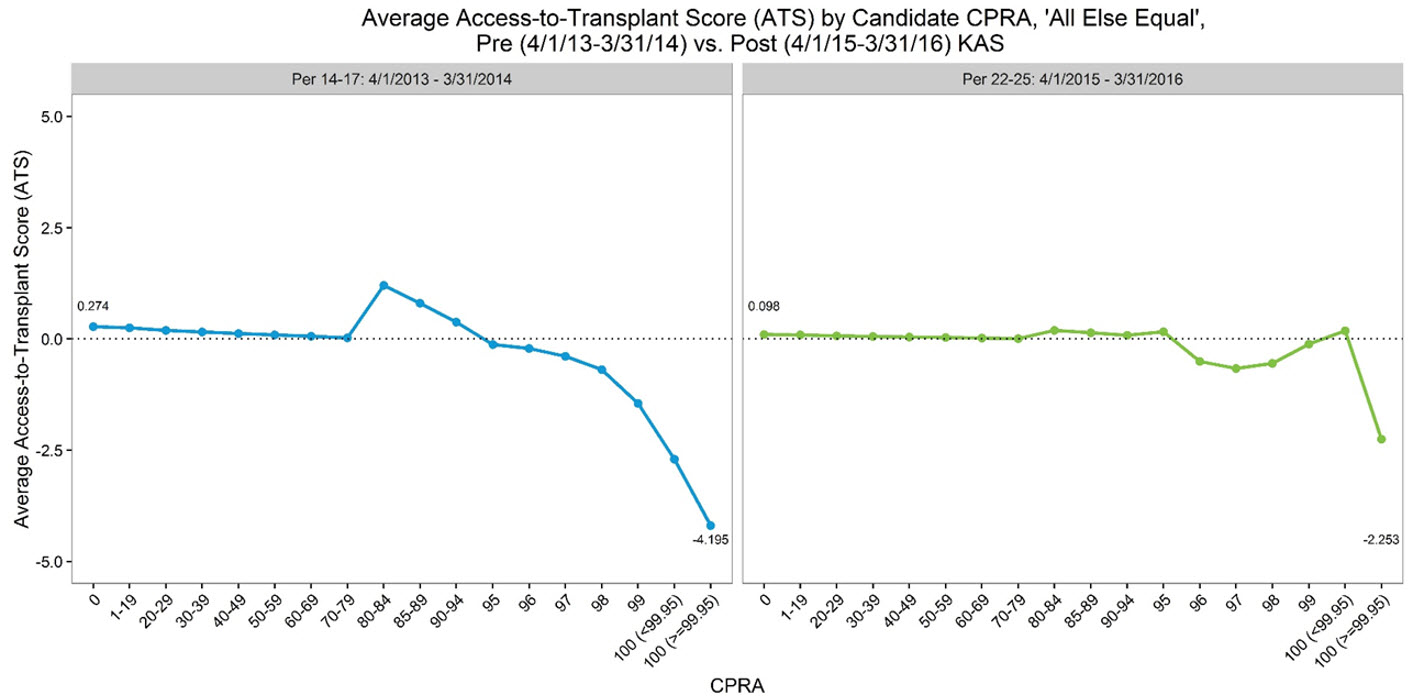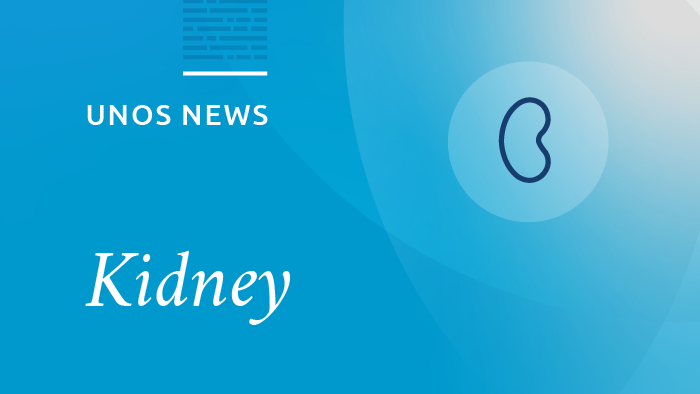UNOS researchers developed a methodology for quantifying how OPTN allocation policy is meeting the needs of transplant candidates. The first Equity in Access report studies the effects of the kidney allocation system (KAS) on recipients of deceased donor kidneys. The same basic methodology will be used to assess other organ systems in the future.
One of the intended effects of KAS was to increase transplant access for highly sensitized recipients, especially those with a calculated panel reactive antibody (CPRA) of 98 to 100. The comparison graphs, showing average access-to-transplant scores for eras before and after KAS, show that KAS has substantially increased equity in access across the sensitization spectrum.
A completely flat baseline – all data points at or very near zero – would indicate comparable transplant access for all candidates. The pre-KAS graph shows considerable variation by candidate CPRA, with unusually high access for candidates with CPRA just above 80 percent but dramatically lower access for candidates with a CPRA of 99 to 100. The post-KAS graph shows considerably less variation across the CPRA spectrum. While access for the most highly sensitized (those with a CPRA over 99.95 percent) remains much lower than other candidates, their transplant access has improved under KAS.

The methodology and findings were presented at this year’s American Transplant Congress:
Stewart, Darren; Wilk, Amber; Cherikh, Wida; Harper, Ann; Urban, Read; Klassen, David; Edwards, Erick; “A New Methodology for Measuring and Monitoring Equity in Access to Deceased Donor Kidney Transplants”, American Transplant Congress, Chicago, 2017.

